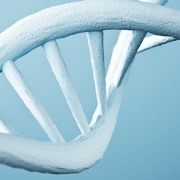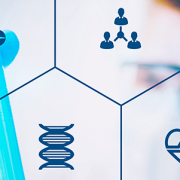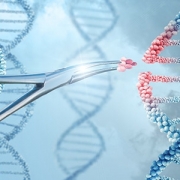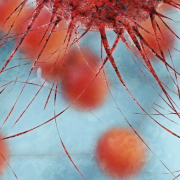Can you spot the hidden genomics?
We’ve put together eight short healthcare scenarios where genomics may play a part. See if you can work it out, and click to reveal if you’re right!
The theme of this year’s #GenomicsConversation campaign is ‘Hidden genomics’. By that, we mean that genomics can be a factor in a person’s health in ways that may not always be obvious, to either the healthcare professional or the patient themselves.
And why is that important? Simply put, because understanding the genomic basis of a disease can help to better diagnose, treat and predict a patient’s condition, which in turn can lead to better outcomes.
Here, we present eight quick scenarios where genomics may be hidden. Can you work it out?
Cancer nurse specialist
“My patient has colon cancer. It’s such a shame, as several on his wife’s side have also had it. We’ve sent off a sample of his tumour for molecular testing.”
Click to reveal the hidden genomics
In this conversation, the hidden genomics is the molecular testing, which will look at the DNA of the patient’s tumour to help determine treatment strategies. The cancer seen in his wife’s family is not relevant here, as they are not the patient’s blood relatives. Watch this short film to learn more about personalised treatment for cancer.
GP
“My patient has high cholesterol and mentioned that others in their family have it too, including younger generations. It’s being managed by medication and diet.”
Click to reveal the hidden genomics
Here, the hidden genomics is that several in the patient’s family have high cholesterol, including some of a young age, which could suggest an inherited condition. Read our factsheet about familial hypercholesterolaemia.
Patient
“I bought one of those tests that can tell your ancestry. It also gave me other results about health. All that from a saliva sample!”
Click to reveal the hidden genomics
In this patient’s conversation with their doctor, the hidden genomics is what the direct-to-consumer test might reveal about the patient’s health and the impact this might have. Learn about direct-to-consumer testing.
Midwife to expecting parents
“This may seem like a strange question, but are the two of you related by blood?”
Click to reveal the hidden genomics
The hidden genomics is in the context of this question. If the parents are related by blood, then this increases the chance of the child having a recessive condition. Watch this animation on autosomal recessive inheritance.
Patient
“This isn’t the first incident of cancer in the family. My mum’s sister had breast cancer in her early 30s and my dad’s brothers wife was diagnosed with ovarian cancer last year.”
Click to reveal the hidden genomics
Here, the hidden genomics is that the patient’s maternal aunt had breast cancer at a relatively young age, which could suggest a genetic predisposition. The patient’s other aunt (their dad’s brother’s wife) is not a blood relation, so there is no genomic link there. Watch this short film about how genomics is used in cancer care.
Midwife
“The heal prick test will look for a number of different metabolic conditions.”
Click to reveal the hidden genomics
The heel prick test – or newborn blood spot screening – will be familiar to every midwife and new parent. But they may not be aware of the hidden genomics: all the conditions screened for are genetic in origin. Learn about newborn blood spot screening.
Patient
“As part of my treatment, I signed up to a clinical trial where they’ll analyse my blood to look for biological markers that might explain my condition, but could also help others with similar symptoms.”
Click to reveal the hidden genomics
In this patient conversation, the hidden genomics is that the biological markers may be genomic. Watch this short film about mutational signatures in cancer.
Doctor
“It’s a new test that can tell you whether you have an increased risk of developing the condition.”
Click to reveal the hidden genomics
The hidden genomics here is that the predictive nature of the test suggests it is genomic in nature. One such predictive test looks at BRCA1 and BRCA2 and other relevant genes, to see if the patient has genetic changes that are linked to an increased chance of developing certain cancers. Read our blog post about the different types of genomic testing.









